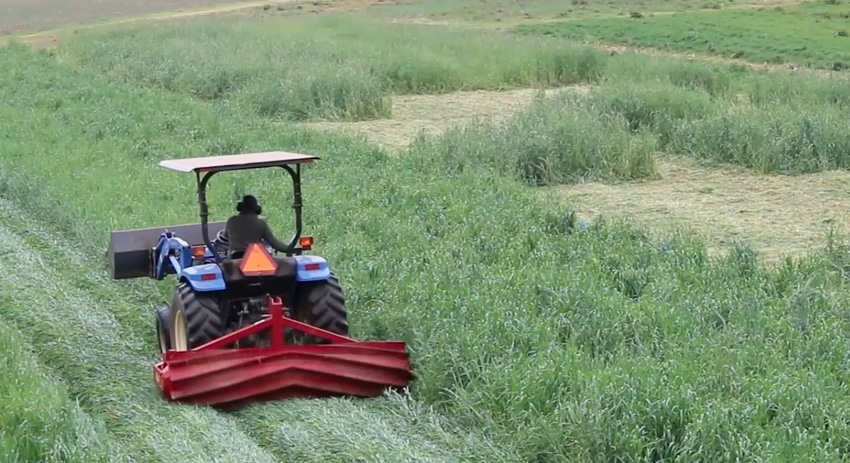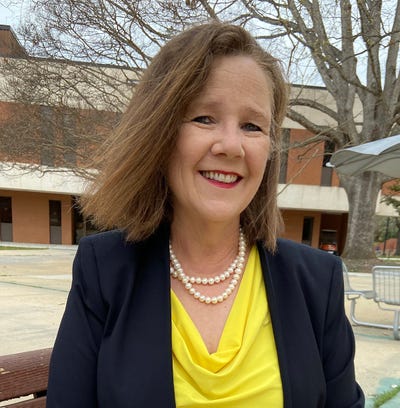
A group of Clemson students is determining how to use shredded leaves to help increase the value of roller-crimped cover crops.
Cover crops are crops planted primarily to naturally manage soil erosion, soil fertility, soil and water quality, weeds, pests, diseases, biodiversity and wildlife. Roller-crimping involves attaching roller-crimpers to tractors, rolling over cover crops to flatten and damage them, leaving behind a thick mulch. Rye grass is the cover crop used in this study.
“Crimping leaves a thick mulch that has a lot of benefits for farmers, as well as soil and the environment,” said Shawn Jadrnicek, manager of Clemson University Student Organic Farm . “The problem with organic no-till is that the cover crop has to be mature enough for the crimping action to kill it and for it to work.”
Because cover crops need to be at a late stage, fully flowering, for roller-crimping to work, the technique can be used just a few weeks each year, Jadrnicek said.
“Another problem is weed suppression is limited to about five weeks,” he said. “The rye grass starts breaking down and weeds start pushing through it.”
In an effort to help increase weed suppression, Jadrnicek has started adding leaves on top of the crimped cover crop.
“Just adding a few inches of leaves on top of the mulch gave us season-long weed control,” he said.
Jadrnicek also found adding leaves to the mulch allows for crimping much earlier.
“Last year, we crimped a few weeks earlier,” Jadrnicek said. “This year, we’re running trials to see how early we can crimp and what’s the minimum amount of mulch required to terminate the cover crop at an earlier date.”
Jadrnicek said different thicknesses of the shredded leaves are being applied to the crimped cover crop using a manure spreader. It takes about two hours to cover a one-quarter acre area with two inches of shredded leaves using a 125-bushel manure spreader. The leaves used in this study are recycled and come from the city of Clemson.
“We’re also applying different age classes of leaves,” he said. “We’re applying older leaves and I’m applying fresher leaves to see what works better. What we’re realizing is cover crops can be crimped much earlier, which, if it works, will allow us to grow a majority of our crops using no-till techniques and expand the possibilities with this new technique.”
The outcome of this project could prove to be a boon for South Carolina farmers.
“The benefits of no-till farming are huge for South Carolina farmers,” Jadrnicek said. “No-till farming allows farmers to conserve resources and saves them an enormous amount of time in their farming operations. The outcome of this study will be beneficial in helping improve no-till practices.”
Jadrnicek said he expects some data from the study to be available by late April or early May
About the Author(s)
You May Also Like






